Who Was the Man Behind Parisian Jewelry House Fred?
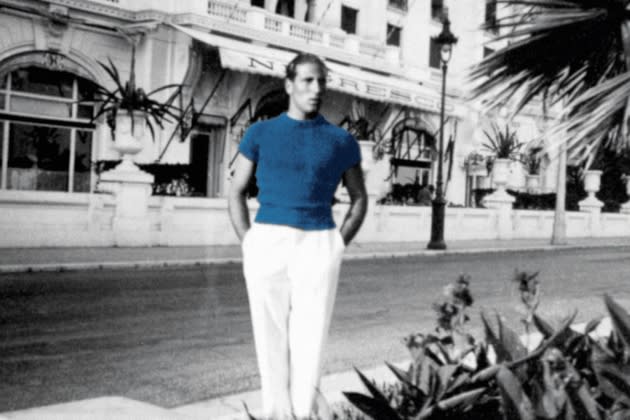
PARIS — If the origin stories of legendary jewelry houses are retold time and time again, their founders are often distant figures shrouded in the mists of a time before ubiquitous photography.
Not so Fred Samuel, the founder of Parisian house Fred.
More from WWD
Just ask around the city’s specialized ateliers and jewelry circles. To many, he is still “Monsieur Fred,” a warm presence who would extend a helping hand to young craftspeople and take a chance on ideas that struck his fancy — to great success.
Now the late founder, who passed away in 2006, is about to become “Monsieur Fred” to a whole new generation with the first retrospective retracing his life and the 86-year-old house he built, which opens on Sept. 28 at Paris’ Palais de Tokyo art museum.
“What is interesting is how strongly he continues to live in the memories and hearts of people who knew him,” says Fred chief executive officer Charles Leung. “Unlike other founders he also had this very good idea to write his memoirs in his later life, so we have access to things he ‘told’ us, rather than just extrapolating.”
Co-curated by Vanessa Cron, a professor and jewelry historian, and Vincent Meylan, a seasoned jewelry editor and author, the exhibition “Fred, Jeweler creator since 1936,” will feature more than 450 jewels and objects alongside nearly 300 documents, organized in 12 thematic rooms more than 7,000 square feet.
Leung says it has been designed as an immersive experience with interactive parts rather than a chronological tribute to “show at once who our founder was and how his spirit will keep on inspiring throughout the years [since] we have the responsibility to take this very unique 20th-century contemporary high jewelry art to the next centuries.”
That, and “what [Fred Samuel] lived was crazy,” he adds.
The exhibition will open with a room dedicated to the 101.57-carat vivid intense yellow diamond Soleil d’Or diamond, which reappeared in 2021. “This was too much of a coincidence,” the executive says. “If this diamond came back to the house, it means it wants to be the star.“
After that, visitors will dive into Samuel’s life. Born in 1908 in Buenos Aires to Alsatian parents who had emigrated to Argentina at the end of the 19th century and were in the jewelry business, he returned to France in the early 1920s.
His father had also been a jeweler, so after studying commerce, he became an apprentice at Worms, then a famous jeweler specialized in natural pearls. He married Thérèse Halphen in 1934 and opened his own store on tony Rue Royale two years later.
The company was first called Fred Samuel and offered “the finest pearls in the capital,” especially since the young entrepreneur had built a relationship with Mikimoto, with which he’d developed a special rosy hue of cultured pearls. On his business cards, he inscribed “Fred Samuel, le moderne joaillier créateur,” (the modern jeweler designer, in French).
The exhibit also touches on his service during World War II, where he enlisted first in the Foreign Legion and later in the Free French Forces, despite being father to two young children. After Paris was liberated, he regained control of his business — being of Jewish descent, he’d been forced to sell it — and found his wife and children unharmed, despite the loss of numerous other family members.
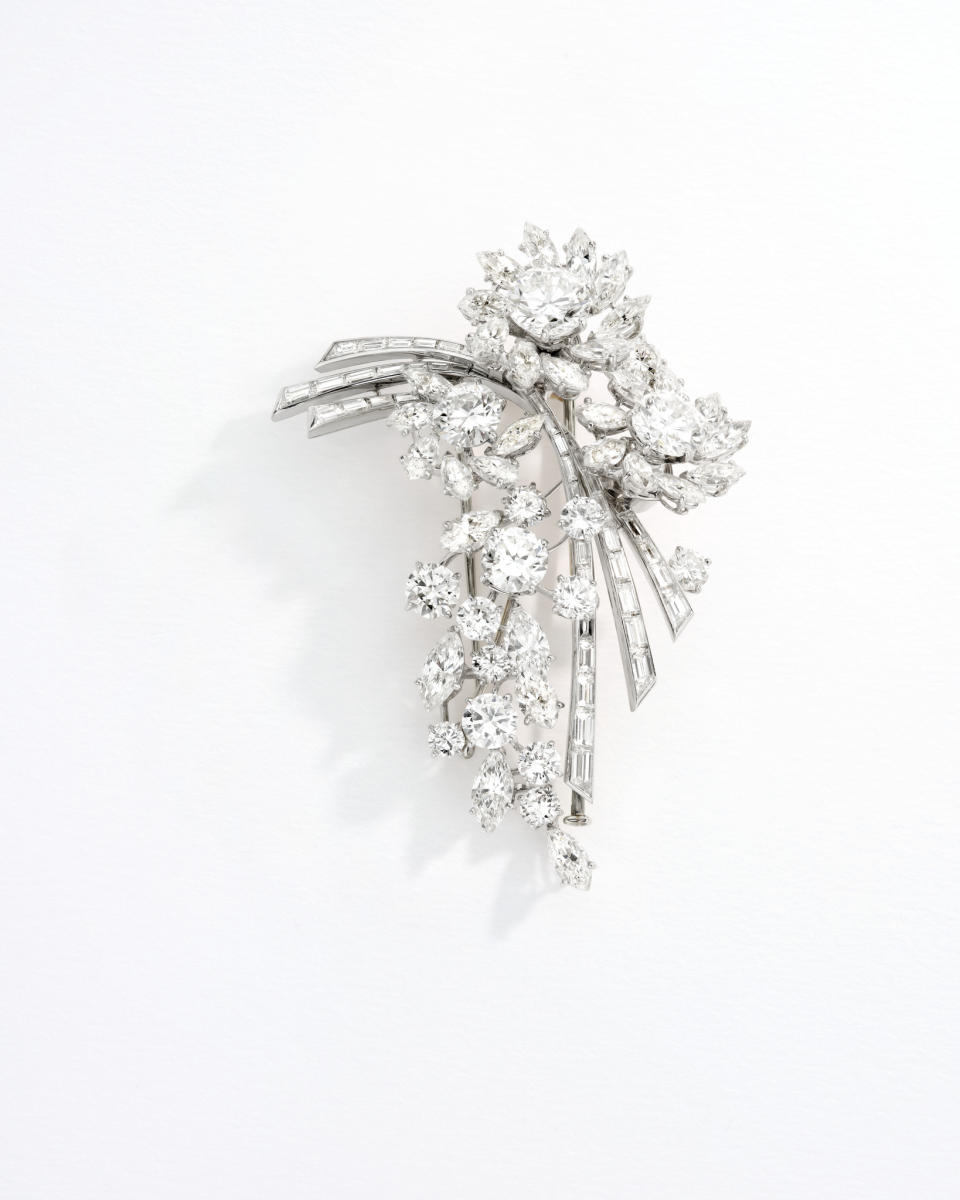
Most touching of all is a brooch that he presented to his wife after the war, set with diamonds that the jeweler had sewn into the sleeve of a garment, in case he needed a bargaining chip during the conflict.
“In his memoirs, he likened [this brooch] to life, saying it was on one hand extremely fragile and on the other very strong but in any case, beautiful,” Leung says.
After 1945, Fred soon thrived, aided by Samuel’s knack to go where other jewelry houses did not tread, including the launch of the steel-and-gold Force 10 bracelet inspired by nautical equipment — sailing was a passion shared by the family, who won several notable races over the years; the opening of a store in Paris’ Orly airport at a time when travel retail did not exist, and working on Saturdays, when the rest of Place Vendôme shuttered for the weekend.
“He never did things like others because he had his own vision of how he wanted to build his business,” says granddaughter Valérie Samuel, who serves as artistic director and vice president of the house, which was acquired by LVMH Moët Hennessy Louis Vuitton in 1995.
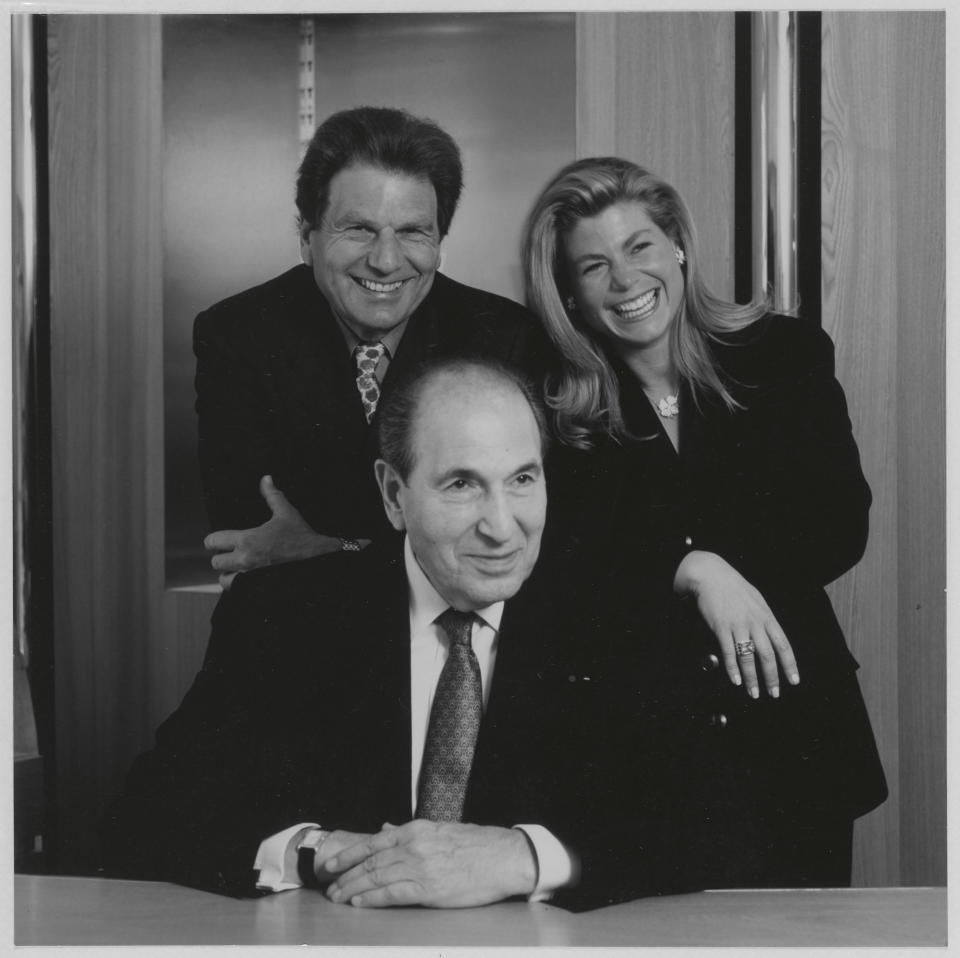
To her as well, the exhibition felt like the adventure of a lifetime. It was among the first topics she broached when she rejoined the house in 2017, shortly before Leung’s arrival, but “it’s not like I arrived with clean, catalogued and ready-to-use archives,” she says with a grin.
The three-year process felt forensic at times but was necessary. She “knew everything that was behind the house” but passing time had distorted elements even in her own recollection. “I didn’t remember much when I came back. But searching through my memories while working on [high jewelry collection] ‘Monsieur Fred Inner Light’ made things reconnect.”
No matter: a storage facility held more than 1,000 boxes, containing nearly 10 tons of materials that had been kept by the company throughout the decades. Inside were some 7,000 gouaché drawings and sketches, just as many photographs and countless papers that eventually helped her to connect the dots with family anecdotes or episodes narrated by Samuel in his memoirs. A “Fred Cherche Fred” (or “Fred is looking for Fred”) open call resulted in further material offered up by clients, family friends and industry connections.
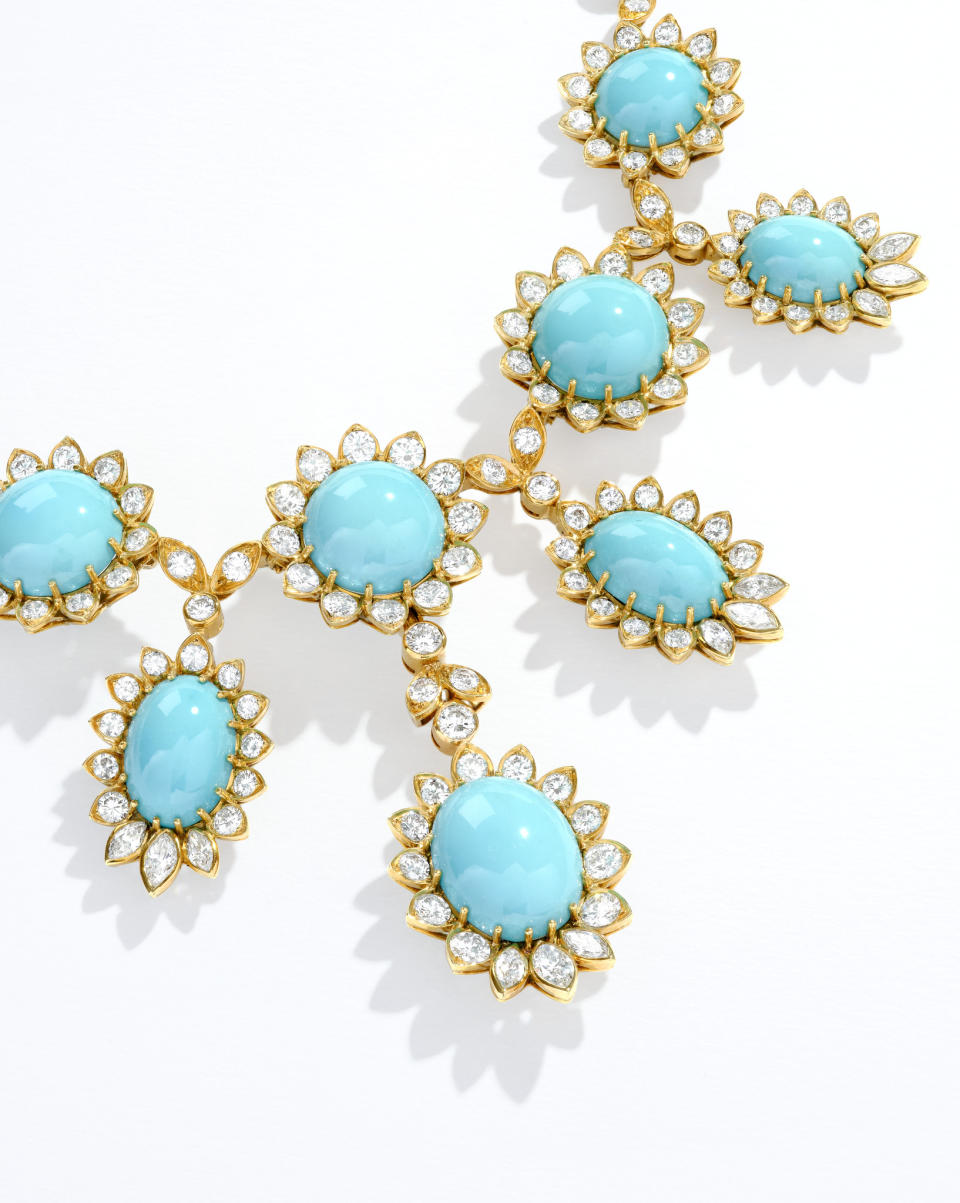
They are put to good use throughout the succession of rooms, where other Fred signatures emerge: his passion for semiprecious stones and colored diamonds, a light-hearted approach to jewelry with charms and the Fredy’s characters, but also the house’s collaborations with a number of artists in various fields. They range from Jean Cocteau and watch designing legend Gérald Genta to photographers Pierre et Gilles and supermodel Kate Moss.
An immersive experience of the sea marks the Force 10 collection’s place in the narrative while a room dedicated to the house’s masterpieces throughout the ages offers an astrolabe, swords designed for cultural figures inducted into the Académie Francaise and a lotus-adorned, diamond-studded fountain carved from a 130-kilo block of rock crystal.
Another important focus is Fred Samuel’s relationships with red carpet royalty and royal families, from Princess Grace of Monaco to Nepal’s last dynasty, where the house was an official supplier to its sovereigns from the ’60s to the late ‘90s.
Taking pride of place in Fred’s cinematic highlights is Julia Roberts’ famous hearts necklace in “Pretty Woman” — or at least its replica, since the original set with 23 rubies was sold — shown alongside the red dress worn by the actress in the film. Roberts’ niece Emma, who fronted the collection inspired by the movie; Catherine Deneuve, and James Bond actress Caterina Murino are among other famous faces.
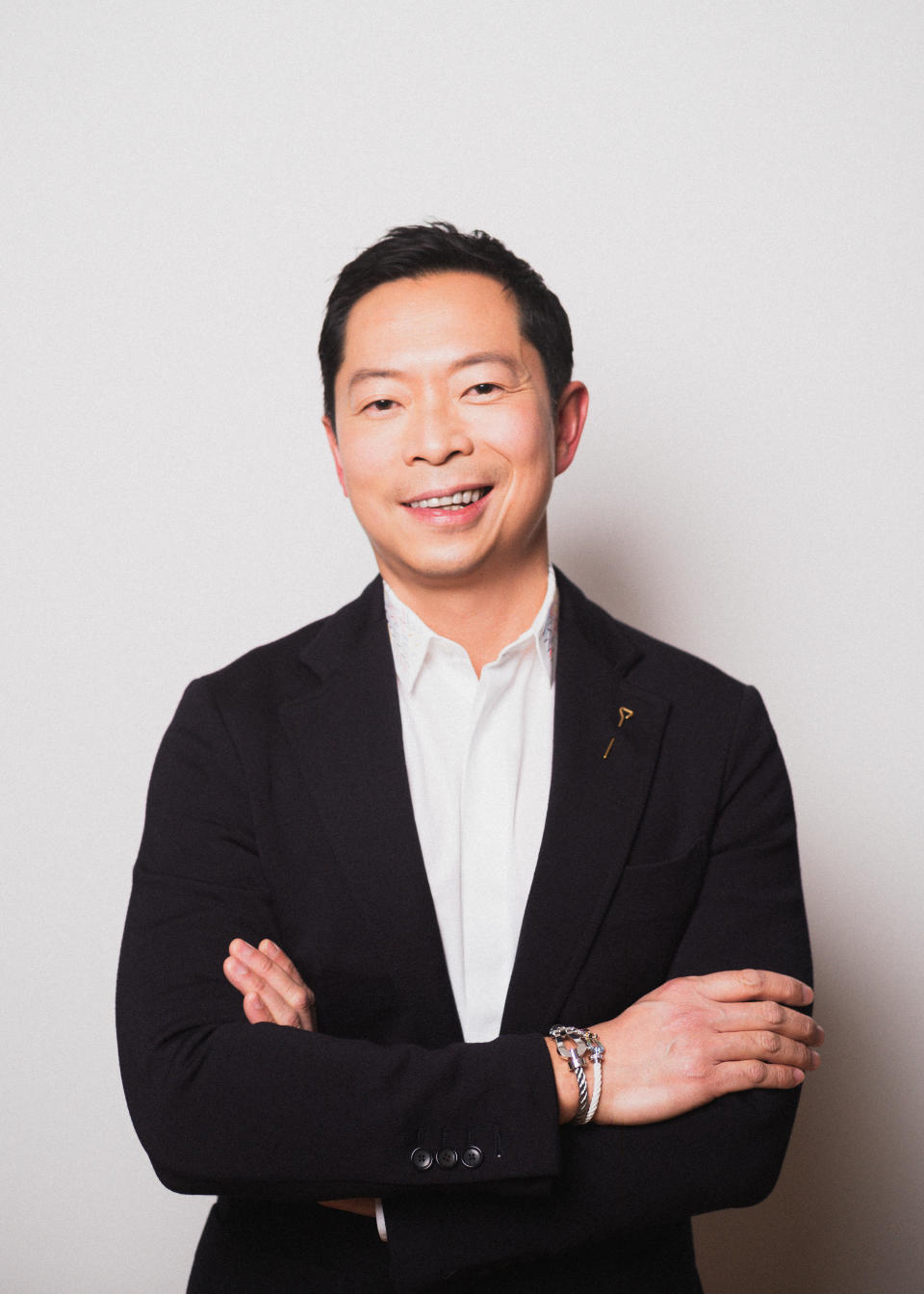
Closing off the exhibition is a selection from the new “Monsieur Fred: Inner Light” high jewelry collection, which can be tried on virtually using AR technologies.
While they hope visitors gain an understanding of 86 years of creative daring, a unique spirit deeply rooted in the zeitgeist and the life of a “perpetual ‘young man’ who lived a long life,” what Leung and Valérie Samuel really want visitors to walk away with is that anyone can “be like Monsieur Fred.“
“The idea is [that] we all can be our own hero in our own way” no matter where and when we are in life, Leung continues. “It’s important for young people in the future not to give up on humanity.“
If some get a hankering for the craft, it would be even better. “We need strong, nice, energetic fresh people to sail longer because we will not be there forever,” he concludes.
IN OTHER WORDS
The story of Fred is further explored in two books released in conjunction with the exhibition at Palais de Tokyo.
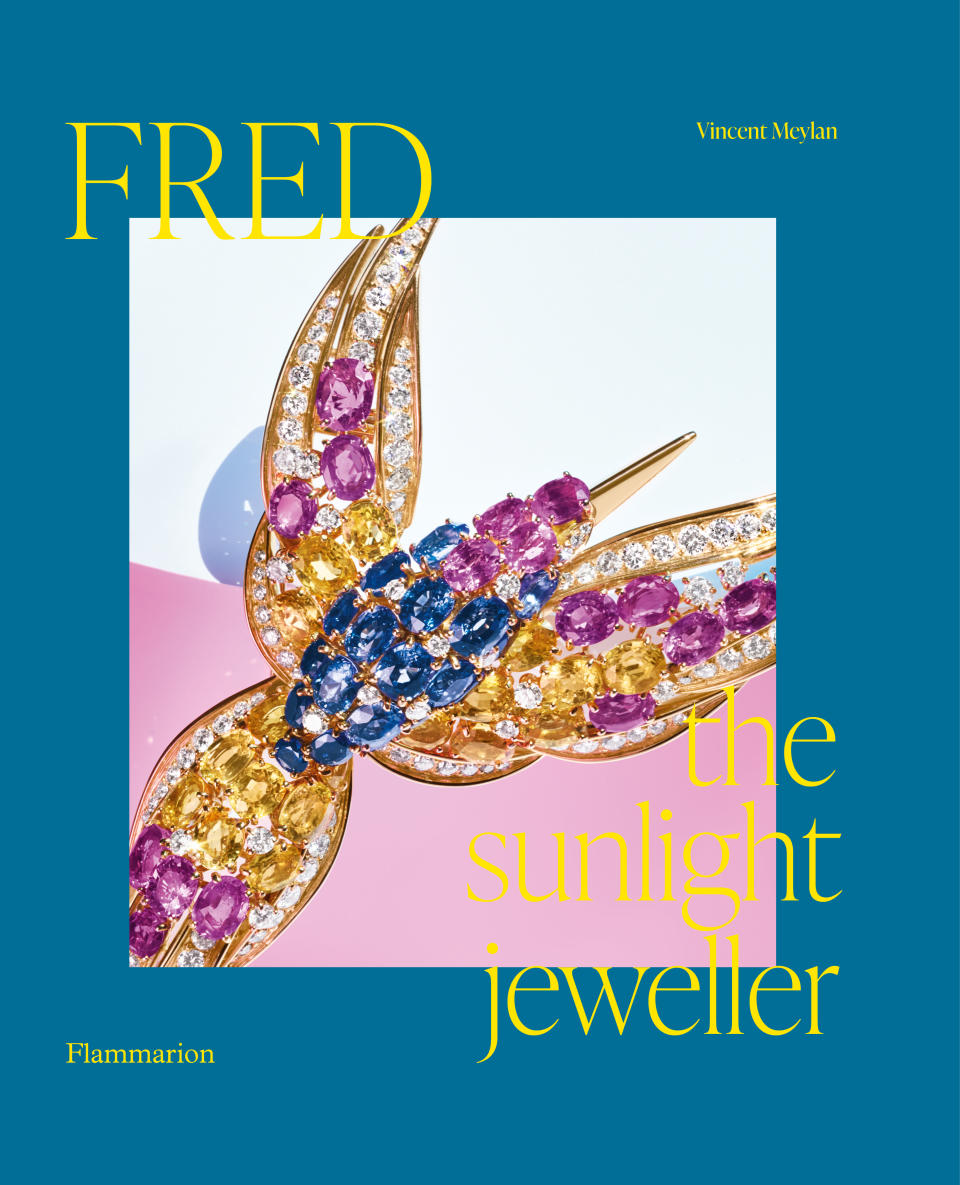
“Fred: The Sunlight Jeweller”
This well-documented tome penned by jewelry historian Vincent Meylan is a companion to the Palais de Tokyo exhibition, building a bridge between the spirit of Fred Samuel and the ongoing legacy of the house he built, now under the dual stewardship of Leung and Valérie Samuel.
256 pages, 65 euros
Published by Flammarion
“A Jeweller’s Memoirs”
First published in 1992 in French and now available in English, this account of Samuel’s life in his own words offers a glimpse into the grit, determination and ever-optimistic spirit that took him from Buenos Aires to Paris, through the tragedies of World War II, and back into the glamorous nadir of high jewelry.
192 pages, 19 euros
Published by Flammarion

